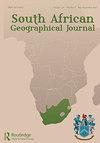公众参与环境影响评估过程的状况及其在南非的作用:以索罗贝尼为例
IF 1.4
4区 社会学
Q3 GEOGRAPHY
引用次数: 1
摘要
公众参与是环境影响评估(EIA)过程中不可或缺的一部分,因为它为利益相关方和受影响方(I&APs)提供了参与决策过程的机会。这一进程是南非立法制度的一部分,并被认为是确保拟议的发展从三螺旋角度(即生态、社会和经济可持续)可持续的主要手段。因此,本文描述了南非东开普省Xolobeni的一个公众参与案例,以及从有利于发展而不是环境保护的争论演变而来的环境政治。拟议的采矿项目被称为Xolobeni采矿开发项目。矿产和石油资源部于2005年宣布,澳大利亚跨国能源和矿产公司(TEM)将在Xolobeni建立一个采矿开发项目,开采五个街区内的红色沙丘,每个街区都以其南部边界流经该地区的河流命名。根据《矿产和石油资源开发法》(2002年第28号法),矿产和能源部是采矿许可证的独家保管人,因此是唯一颁发采矿许可证的部门。在寻求采矿权时,它还要求企业与当地居民协商。阿马迪巴危机委员会(Amadiba Crisis Committee)提出了一项采矿许可证上诉,理由是缺乏磋商。社会分裂也带来了一个复杂问题。TEM的律师于2016年2月3日向社区发送了一份采矿权申请的编辑副本。当地居民被告知,钻探将于2月22日开始,如果不允许进入,将动用武力。在收到采矿权副本后,根据MPRDA第10条提出了反对意见。人们反抗,因为他们不希望自己的土地被夺走。社区也反对拟议的采矿,因为他们担心负面的社会、经济和环境影响。Xolobeni的土地也被社区用于农业或旅游业,他们不想失去这些土地。社区还抵制希望在他们的村庄居住的外国人的移徙,担心他们会超出他们的生活方式,强加一种通常与采矿活动有关的社会生活方式。前面的研究强调了当社区拒绝建立采矿企业时可能发生冲突。因此,本研究的目的是了解将社区协议纳入南非颁发采矿许可证的法律要求是否有助于减少社区动乱。在这个采矿权案件中,高等法院做出了有利于Xolobeni居民的裁决本文章由计算机程序翻译,如有差异,请以英文原文为准。
The state of public participation in the EIA process and its role in South Africa: a case of Xolobeni
ABSTRACT Public participation is an integral part of the Environmental Impact Assessment (EIA) process, as it provides opportunities for interested and affected parties (I&APs) to participate in the decision making process. This process is part of the legislative regime in South Africa and recognized as the main instrument to ensure that the proposed development is sustainable from a triple-helix perspective (i.e., ecological, socially, and economically sustainable). Therefore, the paper describes a case of public engagement in Xolobeni, located in the Eastern Cape Province of South Africa, as well as the environmental politics that evolved from arguments that favoured development over environmental conservation. The proposed mining project was known as the Xolobeni mining development project. The Department of Minerals and Petroleum Resources announced in 2005 that an Australian company, Transworld Energy and Minerals (TEM), would establish a mining development project in Xolobeni to mine red sand dunes contained within five blocks, each named after the river that runs through it on its southern border. The Department of Minerals and Energy is the exclusive custodian of mining licences and thus the only Department that issues them, according to the Minerals and Petroleum Resources Development Act (Act 28 of 2002). When seeking mining rights, it also requires corporations to consult with local populations. The Amadiba Crisis Committee filed a mining licence appeal based on a lack of consultation. One of the complications was also brought about by the divided community. TEM’s solicitors sent a redacted copy of the mining right application to the community on 3 February 2016. The community was informed that drilling would begin on February 22nd, and that force would be employed if access was not granted. Following the receipt of the mining rights copy, an objection was lodged under section 10 of the MPRDA. The people resisted because they did not want their land, to be taken away. The community also opposed the proposed mining because they were concerned about the negative social, economic, and environmental effects. The land in Xolobeni was also used by the community for agriculture, or tourism and they did not want to lose that. The community also resists the migration of foreigners who wish to dwell in their village, fearing that they will overrun their way of life and impose a social lifestyle commonly connected with mining activity. The preceding study highlights the potential for conflict when communities reject the establishment of mining enterprises. As a result, the goal of this study is to see if incorporating community agreement into South Africa’s legal requirements for granting a mining licence could help to reduce community unrest. The High Court ruled in favour of Xolobeni residents in this mining rights case
求助全文
通过发布文献求助,成功后即可免费获取论文全文。
去求助
来源期刊

South African Geographical Journal
GEOGRAPHY-
CiteScore
3.40
自引率
7.10%
发文量
25
期刊介绍:
The South African Geographical Journal was founded in 1917 and is the flagship journal of the Society of South African Geographers. The journal aims at using southern Africa as a region from, and through, which to communicate geographic knowledge and to engage with issues and themes relevant to the discipline. The journal is a forum for papers of a high academic quality and welcomes papers dealing with philosophical and methodological issues and topics of an international scope that are significant for the region and the African continent, including: Climate change Environmental studies Development Governance and policy Physical and urban Geography Human Geography Sustainability Tourism GIS and remote sensing
 求助内容:
求助内容: 应助结果提醒方式:
应助结果提醒方式:


